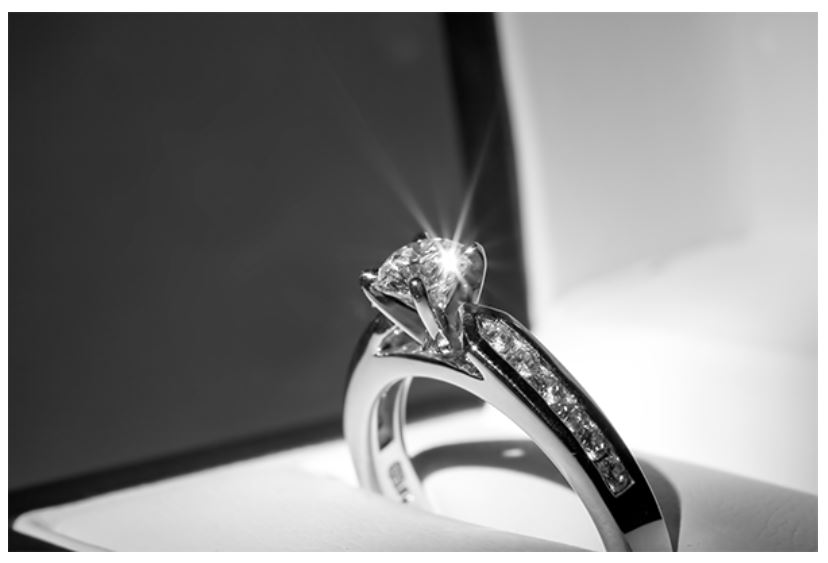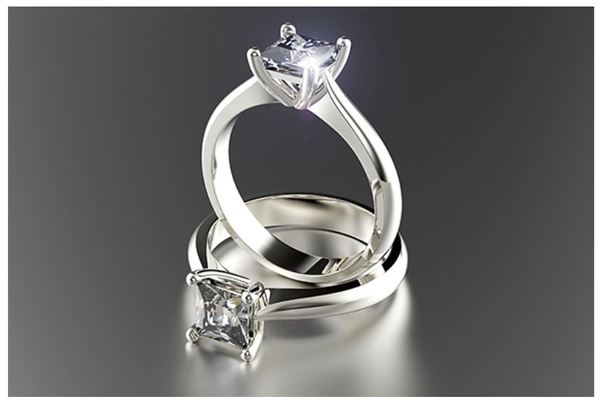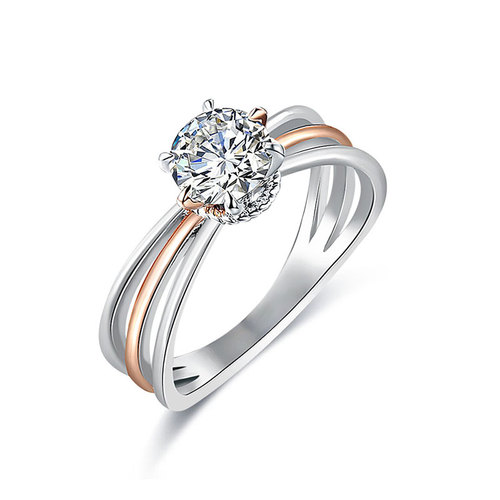Diamond VS. Moissanite Rings

When we imagine an engagement ring, a diamond ring may be our original idea, but it's starting to change. Diamonds have been the jewel of choice for engagement rings and wedding rings for decades, but modern couples are looking for other cheaper and more unique gems.
One new type of ring that's gained in popularity in the last few years is moissanite. Moissanite rings and diamond rings can be remarkably similar in color and clarity, but what are the real differences between them? Can you tell the difference? Where do moissanite rings come from and why should you consider a moissanite ring over a diamond?
Let's figure out what the differences between moissanite and diamond are, and which one to choose from if you're looking for an engagement or wedding ring.
What is Moissanite?
Moissanite is a naturally occurring mineral that's also known as silicon carbide. It was discovered in the 1890s while a scientist was examining a meteor crater in Arizona. The scientist initially thought the substance was a diamond until further inspection, where it was discovered that it was actually silicon carbide.

Since its discovery, silicon carbide has been recreated in a lab setting and mass produced for the jewelry industry. Moissanite has the same shimmer, clarity, and color as a diamond, making it an attractive alternative to diamonds.
What Are the Differences between Moissanite and Diamonds?
If you look at a moissanite ring and a diamond ring side by side, it's kind of difficult to tell the difference (unless of course you’re a jewelry expert). So what are the differences between them?
One of the main differences between moissanite and diamond is that moissanite has a grade of 9.25 on the Mohs scale and diamond has a grade of 10. The Mohs scale of mineral hardness is a way to essentially test how tough minerals are on a scale of 1-10 (1 being soft and 10 being the hardest). The harder the mineral, the more resistant it is to scratching. The way you can tell a hardness of a mineral is to see if it scratches a mineral that is “softer.” What this means is that a diamond is a little bit harder than moissanite, but not all that much, making moissanite a durable and long-lasting mineral that’s suitable for everyday wear.

Another main difference between moissanite and a diamond is that generally moissanite tends to be a little sparklier than a diamond even if it has similar color, clarity, and cut. Although natural moissanite is pretty rare, most of the moissanite that’s on the market has been created in a lab and therefore can be manipulated to get out internal flaws, making it more brilliant and sparkly.
While moissanite is mostly created in labs, diamonds are still mostly mined from the earth (although now there are an increasing amount of lab-grown diamonds being introduced to the market). In the past, the diamond industry has been fraught with conflict and human suffering over the mining of these precious stones in different countries. However, now that the public is aware of the existence of conflict diamonds, it’s much easier to get your hands on a responsibly mined, conflict-free diamond. Many diamonds now come with their own conflict-free certification, which tells you where the diamonds were mined and under what circumstances.

Lastly, moissanite rings also tend to be much more inexpensive than a diamond of similar size. You can expect to pay about 10-15% less for a moissanite ring than you would for a diamond ring.
So Which Should I Purchase—Moissanite or Diamond?
Now that you are aware of all the differences between moissanite and diamond, how do you choose which one is right for you?
When you’re trying to choose between the two stones, first think about your budget. Moissanite rings are cheaper than diamond rings, and it's likely you can get a larger moissanite stone that will fit into your budget. However, diamond rings are diamond rings. We get it. They're classic, and if that’s important to you, then think about how you would feel about having a smaller diamond versus a larger moissanite stone.
You should also consider how you feel about how the stone is processed and made. Moissanite rings are more eco-friendly than diamonds. If you try to live earth consciously, it might make more sense to go with a moissanite ring versus a diamond.
Ultimately, it might come down to taking a look at a few rings and determining whether or not you like the moissanite or diamond variation (and also, whether or not you can even tell the difference just by looking at them).
Many other couples decided to forgo colorless gemstones in favor of other gemstones, such as amethyst or emerald. Whatever you choose, the ultimate and most important thing is, of course, what the ring symbolizes: your love and commitment to each other.Here we highly recommend a special colored gemstone ring, Opal Rings, which is also a very special gem ring in the present.




